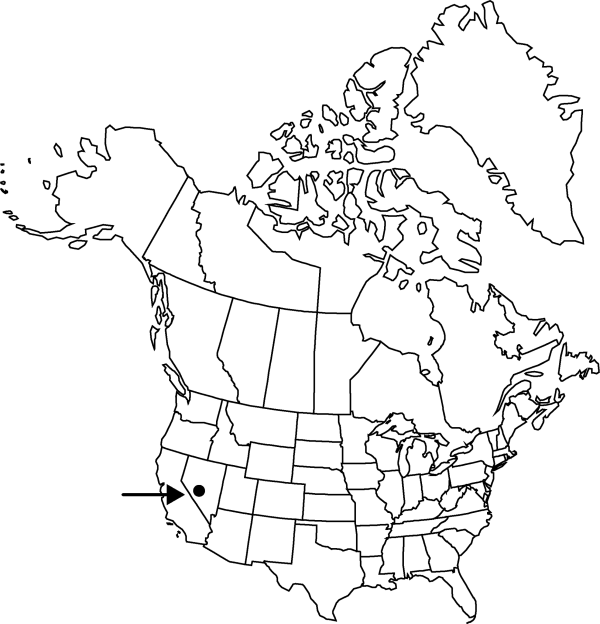Sclerocactus nyensis
Succulenta (Netherlands) 71: 253. 1992.
Stems unbranched or 2–3-branched, spheric, cylindric, or elongate-cylindric, 5–12(–16) × 4–8(–10) cm; ribs 12–15, well developed, tubercles sometimes evident on ribs. Spines 10–14(–17) per areole, dense, obscuring stems; radial spines white, straight, flat, 8–20 mm; central spines (1–)6–8 per areole; abaxial and lateral central spines (0–)3–5 per areole, red or reddish brown, usually hooked, 20–60 × 0.7 mm; adaxial central spines 1–2(–3) per areole, white, straight, (rarely hooked), flat, usually 25–45 × 1.5–2 mm. Flowers campanulate, 3–4 × 2–2.5 cm; outer tepals with greenish purple midstripes and rose-purple or magenta margins, cuneate-spatulate, usually 10–17 × 5–8 mm; inner tepals rose-purple to magenta, largest tepals ovate-lanceolate, 18–22 × 6–8 mm; filaments green to yellow; anthers cream to yellow. Fruits indehiscent or irregularly dehiscent, green to tan or pale red, barrel-shaped, 15–20 × 7–15 mm, dry at maturity. Seeds black, irregularly furrowed, 3–3.5 × 2 mm; testa with rounded papillae.
Phenology: Flowering May.
Habitat: Volcanic tuff and other volcanic deposits, northern Mojave desert scrub and saltbush flats
Elevation: 1500-1700 m
Discussion
Of conservation concern.
Apparently endemic to Esmeralda and Nye counties, Nevada, Sclerocactus nyensis displays considerable morphologic variation across the relatively few small populations. Some plants are similar to S. blainei, S. pubispinus, and S. spinosior, but differ in the higher number of central spines (six to eight), and more or less indehiscent fruit. Chloroplast DNA analyses (J. M. Porter et al. 2000) provided evidence that Sclerocactus nyensis is the sister taxon to S. papyracanthus.
Selected References
None.
